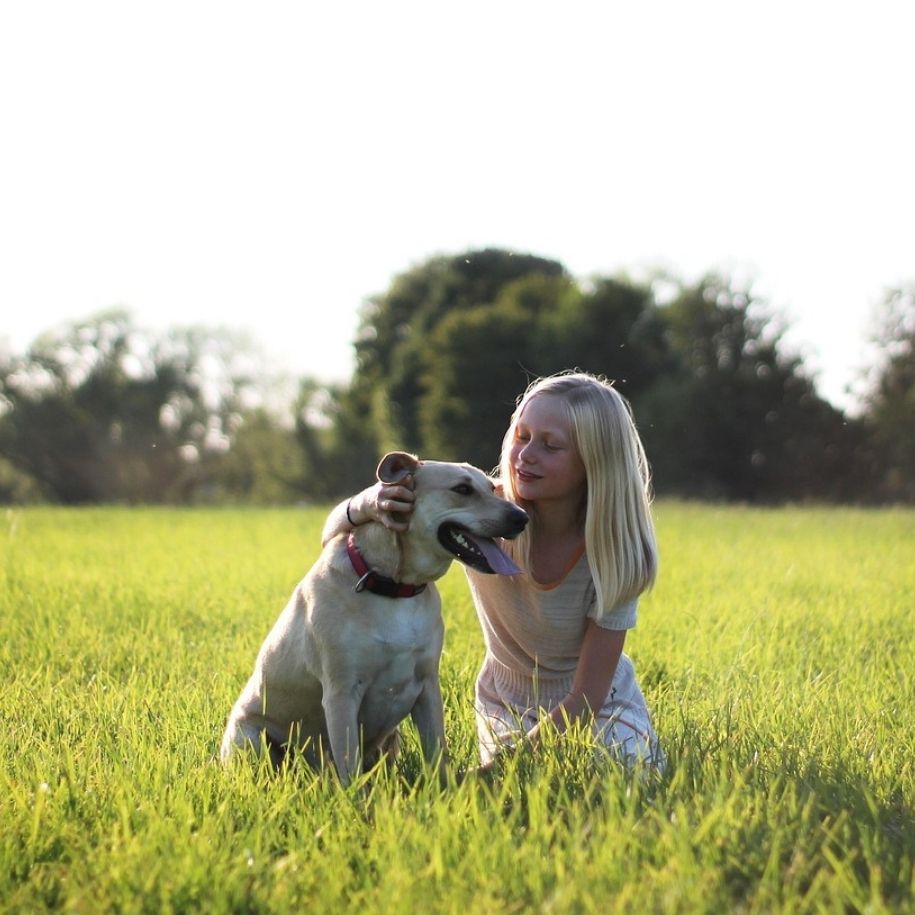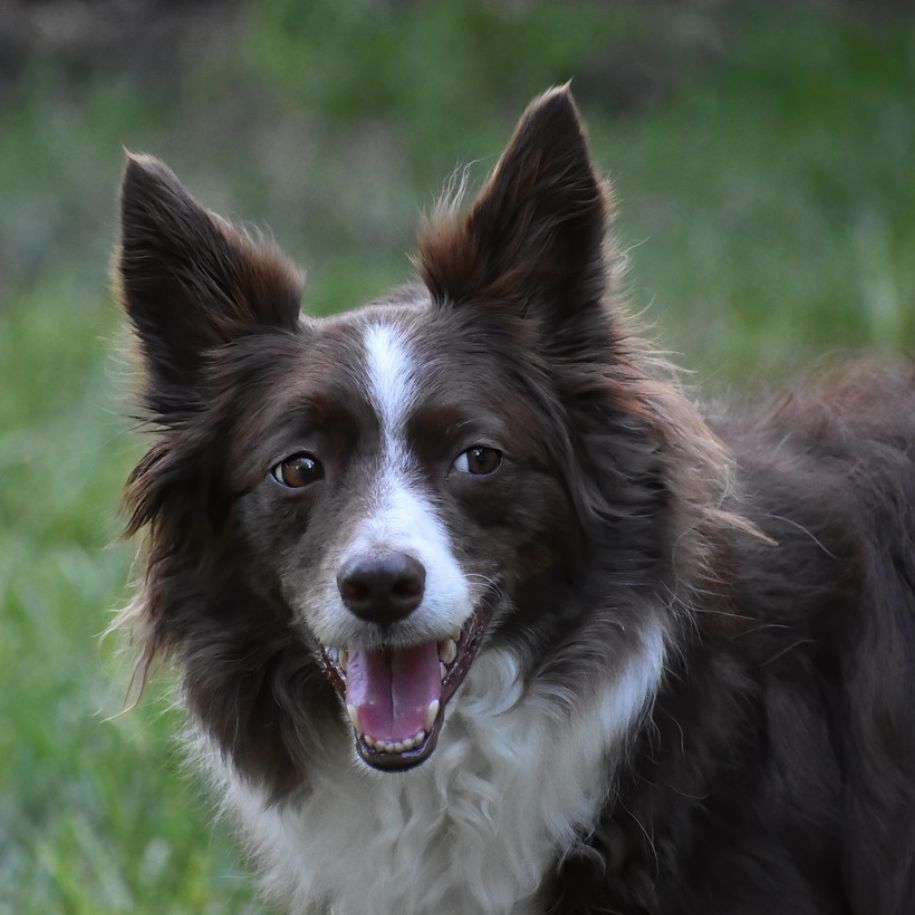Searches for large dog breeds in Britain keep climbing as more pet parents swap smaller dogs for the so-called gentle giants. Kennel Club figures show that four of the UK’s ten most-registered breeds now top 25 kg, led by the Labrador Retriever. Big dogs were originally bred to pull sleds, guard livestock or accompany hunters, so they still enjoy a long walk across the great outdoors. Yet many—think Great Danes or Bernese Mountain Dogs—are calm in the house once their exercise needs are met. This guide explains size, care and temperament so UK owners can tell whether a giant dog breed is the perfect companion or if a more modest buddy makes better sense for their space and budget.
What Makes a Dog “Large”?
The Kennel Club classes a large dog as any breed that usually tips the scales above about 25 kg and stands over 60 cm at the shoulder. Size affects feeding costs, hip-dysplasia risk and even rental deposits. The Irish Wolfhound—the tallest dog breed recognised in the UK—can reach 86 cm and is affectionately called a “gentle giant”.
Popular Big Dog Breeds in Britain
Below is a snapshot of ten crowd-favourites, covering temperament and typical uses
| Breed | Why UK Families Love Them | Watch-outs |
|---|---|---|
| Great Dane | Calm couch-friendly giant dog; tallest breeds list topper | Short life expectancy (≈ 8 yrs) |
| Irish Wolfhound | Noble history from ancient breed hunters | Needs open space |
| Saint Bernard | “Nanny dogs” with a strong sense of duty | Heavy drool, thick double coat |
| Bernese Mountain Dog | Swiss Alps working dog; loyal family pet | Prone to hip dysplasia |
| Newfoundland | Powerful swimmer, gentle with children | Dense coat needs daily care |
| Cane Corso (Italian Mastiff) | Confident guard dogs, strong-willed | Early training essential |
| Neapolitan Mastiff | Roman Empire guardian; dramatic droopy face | Needs firm, positive handling |
| Great Pyrenees | Livestock guardian for cold weather | Can roam without solid fencing |
| Black Russian Terrier | Smart working dog with lion-like mane | Requires mental work |
| Dogue de Bordeaux (French Mastiff) | Iconic film star, affectionate | Heat-sensitive skin folds |
Size & Space in Typical UK Homes
Britons live smaller than our canine cousins might like: the median garden is just 188 m². Before bringing home a giant breed, measure hallways, doorframes and boot space. A Great Dane needs an XXL bed (at least 137 cm long); a Bernese with a long haired, thick double coat needs shady spots during warm spells. Flat-dwellers can keep big dogs if lifts are roomy and a long walk is routine. Rural owners should check fencing—Irish Wolfhounds can clear 1.5 m with ease. Landlords often ask for higher pet deposits, so show them proof of insurance and early training certificates to reassure them that your family dog won’t out-muscle the furniture.
Common Health Issues in Large Dogs
Large dog breeds—including giant dog breeds such as Great Danes, Saint Bernards, and the mighty Irish Wolfhounds—have bodies that grow fast and carry immensely strong frames. That size brings unique challenges. Below are the problems you’ll meet most often, how to spot them, and what you can do to keep your gentle giant feeling their best.
1. Hip and elbow dysplasia — the classic “big‑dog ache”
-
What it is: A loose fit in the hip or elbow socket that wears the joint down.
-
Who’s prone: Bernese Mountain Dogs, Newfoundlands, Rottweilers, Labradors, and other big dog breeds with a sturdy build.
-
Signs to watch: Bunny‑hopping, slow to rise, reluctance on stairs, or a dog that would rather relax than go for its usual long walk.
-
Prevention & care: Keep pups lean while they grow, avoid heavy loads on young joints, use ramps instead of jumps, and ask your vet about early screening.
2. Gastric Dilatation‑Volvulus (GDV) — “bloat”
Nicknamed “the mother of all emergencies,” GDV can twist a dog’s stomach in minutes.
-
Split meals (no single giant feed).
-
Use slow‑feed bowls—ideal for giant breeds that inhale food.
-
Rest 30 minutes after exercise before eating.
-
Know the red flags: distended belly, drooling, retching with no vomit.
3. Skin & coat problems
-
Double‑coated mountain or livestock guardian dogs such as an Anatolian Shepherd or Great Pyrenees need regular grooming to avoid mats that trap moisture and trigger hot spots.
-
Breeds with wrinkly skin—think Neapolitan Mastiff or French Mastiff (Dogue de Bordeaux)—collect fungus in skin folds; wipe daily.
-
A thick double coat does shed; brush outdoors to keep house fur‑free.
4. Heart conditions
Great Danes, Dobermans, and Boxers can develop dilated cardiomyopathy.
-
Annual heart checks after age five extend lifespan.
-
Moderate, not marathon, daily exercise; avoid overheating in summer.
-
Alert your vet if you notice coughing at rest or sudden weakness.
5. Obesity & weight management
Even the most laid‑back gentle nature can hide a huge appetite.
-
Use your dog’s average height and ideal weight (ask the Kennel Club chart) to portion food.
-
Replace one treat session with a quick session of training games—keeps minds sharp and bodies trim.
-
Remember: Compared with smaller breeds, a giant dog only needs to gain a few kilos to overload joints.
Daily Care Essentials
Exercise & Weight
The PDSA advises most large breeds need 1½–2 hours of exercise every day, split between steady trots and joint-friendly off-lead play. Lack of movement fuels obesity: an RVC Vet Compass study found 1 in 14 UK dogs is overweight each year, with Labrador Retrievers most at risk.
Feeding & Health
Feed life-stage formulas aimed at giant dogs to control rapid growth and lower hip-dysplasia odds. Watch salt in treats—big hearts are more prone to dilated cardiomyopathy. Annual screens for heart disease and elbow scores are wise for breeds like the Great Pyrenees and Newfoundlands.
Legal Basics
All UK pups must be microchipped by eight weeks, or owners face a £500 fine. Update the database when you move; big dogs wandering without ID can be mistaken for strays.
Grooming
Thick double-coat breeds (e.g., Saint Bernard) need weekly rake-outs to avoid mats, while smooth-coated Italian Mastiffs benefit from a quick mitt wipe. Budget for professional groomers if you dislike hair storms indoors.
Mental Work
Large, smart breeds such as the Black Russian Terrier crave “jobs”—nose-work games or backpack hikes keep boredom (and barking) at bay. Provide puzzle toys that fit their large stature rather than toys meant for smaller counterparts.
Temperament & Training
Big dogs come with big personalities. Many large dog breeds—from the laid-back great danes to the strong-willed cane corso—were originally bred as working dogs or guard dogs, so they still carry a strong sense of duty. Early training is non-negotiable: start reward-based classes before 16 weeks so these giant breeds learn polite greetings while they’re still (relatively) small. The RSPCA’s recall booklet shows step-by-step positive methods you can copy at home. Short brain games—scent trails, puzzle bowls—tire out a black russian terrier as surely as a long walk. Socialise with smaller dogs in safe settings to prevent over-boisterous play. With clear rules and praise, even a neapolitan mastiff with that famous droopy face can become a calm family dog and a credit to the neighbourhood.
Legal & Money Matters in the UK
Microchipping & ID
UK law says every pup must be microchipped by eight weeks—or owners face a £500 fine. Keep your contact details current so a found bernese mountain dog makes it home fast.
Dangerous Dogs Act
Four “type” breeds are banned under the 1991 Act; others, like italian mastiffs and great pyrenees, are legal but must be under control in public legislation. Good leash manners help protect our “gentle giants” from unfair stigma.
Real-World Costs
Vet fees scale with size: cruciate-ligament surgery on a saint bernard can top £3,000. Money Helper lists average premiums for large breeds at £35–£80 a month, double what smaller counterparts pay. Budget extras for hip-dysplasia X-rays, heart-disease scans and XXL crates—plus a car big enough to fit your livestock guardian comfortably.
Sustainable Ownership
Before buying, check rescue portals: Dogs Trust often lists giant dog breed adults needing “enough space” and a committed home. Adopting reduces demand from less-ethical breeders. Eco-tips for pet parents:
-
Pick durable toys and wash-down sofa covers instead of single-use throws.
-
Feed in bulk—those thick double-coat mountain dogs go through kibble fast, but bigger bags cut plastic waste.
-
Walk locally; a daily hike across the great outdoors meets exercise needs without car trips, even in cold weather loved by a swiss alps-bred bernese.
Planning for a 10-year life expectancy (6–8 for irish wolfhounds) keeps big-paw prints lighter on both planet and wallet.
FunnyFuzzy's Washable Sofa Covers
Choosing Your Perfect Large Breed
Use the “3 S” test: Space, Schedule, Spending.
-
Space: Can your hallway turn a french mastiff (aka dogue de bordeaux) without scrapes? Garden smaller than 140 m²? Maybe a medium-large boxer suits better.
-
Schedule: Working dogs such as great pyrenees need jobs; couch-friendly newfoundlands still need swimming outlets.
-
Spending: Factor insurance, grooming and extra food. A lion-like mane on a tibetan mastiff means pro grooms; a sleek roman empire descendant like the neapolitan mastiff just needs wipes.
Match these to temperament—do you crave a watchdog, a jogging buddy or a nanny dog for kids? Cross-check both Kennel Club data and American Kennel Club profiles for wider insight.
FAQs
What is the top 10 largest dog?
Common UK chart (shoulder height): Irish Wolfhound, Great Dane, Saint Bernard, English Mastiff, Leonberger, Newfoundland, French Mastiff, Great Pyrenees, Cane Corso, Bernese Mountain Dog.
What is the friendliest big dog?
Many trainers still vote the ever-waggy Golden Retriever, prized as one of the best family pets for gentle manners.
What is the best large breed dog to own?
“Best” equals fit: rural hikers love german shepherds; city dwellers wanting calm may choose great danes.
What is the largest dog breed in the UK?
The Irish Wolfhound holds the record, averaging 81–86 cm tall at the shoulder — a true gentle giant.
Conclusion
Owning big dogs is hugely rewarding: they cuddle like teddy bears yet stride beside you on misty hill walks. Master early training, respect UK laws, and budget for their large stature health care. Do that, and you’ll share life with a loyal shadow who turns heads wherever you roam.






